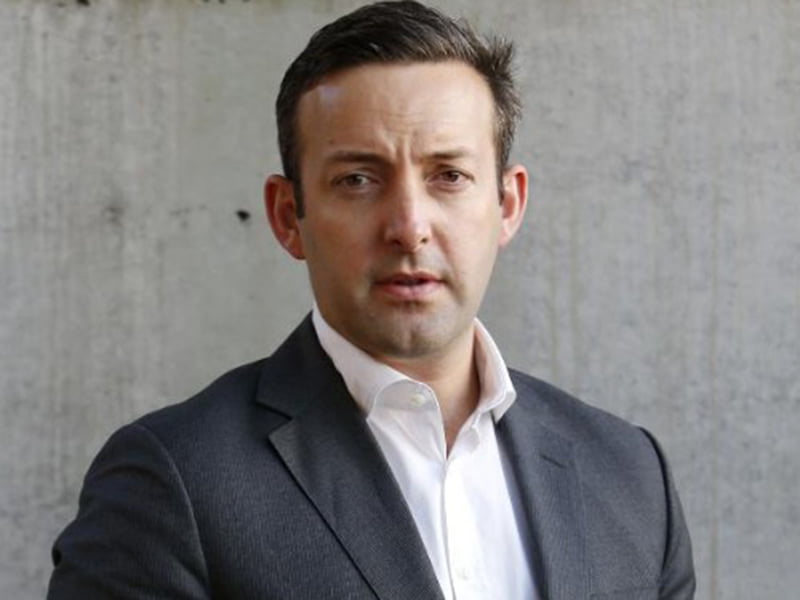The Australian Space Agency should be made a permanent statutory authority and be given funding that is more in line with comparable countries like Canada, the head of Australia’s space industry association says.
NASA’s budget for the 2021 financial year is $US23.3 billion ($A31.89b), while Canada’s is $CA403.6 million ($A437m). Meanwhile, the Australian Space Agency’s budget has varied between $5.7m and $13.7m since 2018, with a total of $41 million allocated over the past four years excluding industry grant programs.

An additional $13.3m was allocated to the agency over the next four years in May’s budget, equating to just $3.3m per year.
While the chief executive of the Space Industry Association of Australia James Brown isn’t seeking the agency to have its funds boosted to the likes of NASA’s, he points out that Australia could do better given its space budget is ranked 18th amongst the G20 nations.
“The midterm question for the agency is making them permanent,” Mr Brown tells InnovationAus. “Their funding expires fairly soon. They’re not a permanent agency. They’re part of the Department of Industry, which has effectively been running a three-year pilot program to see whether we need one.
“The verdict is in, so we’re talking to the government and the opposition about making the space agency a statutory agency with its own sort of independent staff and a permanent budget.”
He points out that at present, the agency could fairly easily be shut down at any point in time.
“If a minister or the Department of Industry decided to reorganise [and] close down the space agency they could,” he said. “Once you have a statutory agency, that can only be done by legislation.”
Industry Minister Christian Porter told InnovationAus the government was “consistently open to hearing contributions from the space industry on how to further grow the sector, noting in particular the increasing economic and strategic importance of space in to the future”.
“I am in constant engagement with my department and heads of all agencies to ensure funding is fit for purpose,” he said.
Mr Brown would also like to see Australia have a national civilian space program, where the industry is given the opportunity to provide to government satellites in the 100-300 kilogram range that could assist with activities such as bushfire detection, drought and farm monitoring, and provide position, navigation and timing capabilities.
“What we would want to see is the agency properly staffed and funded,” he said. “And then, secondly, is that commitment to a national civilian space program. So at the moment, we’ve got all this money pouring into Defence space, which is fantastic. But on the civilian space side, we don’t actually have any sort of long-term plan.
“And for space technology, you need five to 10 years with the planning and funding because the stuff you’re doing is really hard and complicated.”
A national civilian space program was needed because federal and state governments could no longer take for granted other countries’ civilian capabilities, he said, especially in times of crisis where Australia might need a satellite tasked for bushfires while Japan or the US might need to prioritise a hurricane or flood.
“There are some overseas satellites that we rely on for some really critical data for agriculture, data that is critical to a lot of land management, a lot of decisions … that we get completely for free,” he said. “And those countries in their Parliament’s or in their agencies have said, ‘Well hang on, why do we give this to Australia for free?’.
“It’s also a pressure point that people could put on us as well. They could cut off access to satellites in the worst case.”
The lack of a Technology Safeguards Agreement (TSA) with the US was also causing some friction among the industry, he said. Such an agreement would make it easier for Australians and Americans to work on space projects in each others’ countries, but also allow companies that want to work on projects together to do so and allow them to build satellites in Australia and put them on US rockets or vice versa.
“If you work at SpaceX, for example, and you’re doing rocket technology and propulsion technology and you move to Australia, as one of our members recently did, you can’t then work on that stuff in Australia,” Mr Brown said. “You’re prohibited by law from doing that.”
Countries like New Zealand and the UK have already signed a TSA, while Australia is still negotiating its.
“So that’s kind of really important at the moment,” he said. “The most recent one was done with the UK and I think that’s the model that we’d want to see being used in Australia’s case.
“The New Zealand one for example is quite specific and narrow and quite restrictive, [whereas] the UK one is much broader and sort of gives us more room for UK companies to move, so I think we want to see something that looks more like that.”
He understood that Australia was “in the thrashing out the details phase”, but that it was taking some time because it was “quite a complicated” agreement.
“It impacts on 37 different pieces of Australian legislation and it’s a treaty, so it kind of needs to go through a whole bunch of processes.”
Longer term, Mr Brown said he was encouraging the government to think about what a plan to procure satellites over the next 10 years might look like “as opposed to a program of well-intentioned but ultimately adhoc grants, which is what we have at the moment”.
He said signs were encouraging and that there had been “one important change that’s happened in the last 12 months” in conversations with government.
“When I first started in this job, I used to hear from government … that [space] is going to be private-led, this is going to be private investment, [and that] government will just kind of be hands-off and help [the industry] grow. That’s just not going to work. It doesn’t work in space anywhere in the world.
“We’ve seen the message on that change from government now, from the Prime Minister down. We’re hearing, ‘OK, we get it, government needs to play a big role both as a client, but also in terms of pointing the way.”
While Industry Minister Porter didn’t give any hints on whether space agency funding would be boosted, he pointed to the $150 million Moon to Mars initiative and the government’s $1.5 billion Modern Manufacturing Strategy, which also includes space as one of six national manufacturing priority areas, as initiatives the government was undertaking to assist the sector.
“The work of the Australian Space Agency complements significant investment across the sector of over $700 million by the government since the agency was established in 2018 in order to grow in the civil space sector and create jobs right across the supply chain,” Mr Porter said.
Labor’s industry and innovation spokesperson Ed Husic said Labor has “enormous belief in Australia’s ability to innovate, and we are looking at every possible way to support emerging industries to provide strong and steady jobs for the future”.
“I’m in ongoing consultation with the Space Industry Association and am always energised by their ideas on how to best support the growth of Australia’s space sector,” Mr Husic said. “This year Labor announced a National Reconstruction Fund which will provide up to $15 billion of capital to invest in job-creating projects through loans, equity and guarantees.”
Do you know more? Contact James Riley via Email.

